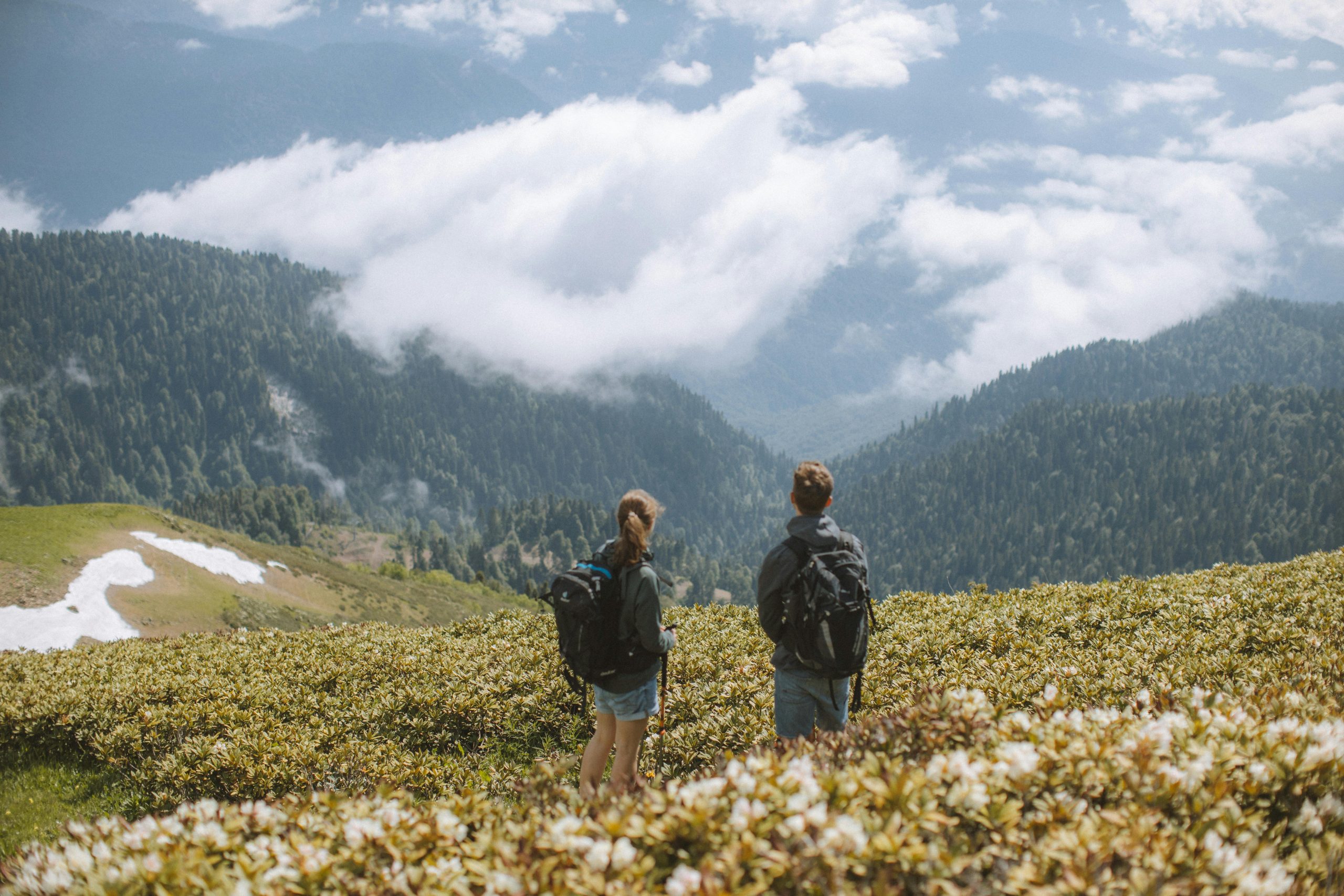Are you ready to transform your outdoor experiences into safe and memorable adventures? Hiking offers incredible physical and mental benefits, from improved cardiovascular health to reduced stress levels. According to the Outdoor Industry Association’s 2025 report, over 57 million Americans participated in hiking activities, marking a 15% increase from the previous year. Whether you’re planning your first trail or seeking to enhance your existing skills, proper preparation makes all the difference.
Pre-hike planning: The foundation of every great trail experience
Successful hiking adventures begin long before you lace up your boots. Thorough pre-hike planning transforms potentially dangerous situations into memorable outdoor experiences, ensuring you’re prepared for whatever the trail throws your way.
In parallel : Top Exercises to Boost Flexibility and Strength in Competitive Gymnasts: Unlock Your Potential!
Start your preparation by researching your chosen route through reliable sources like AllTrails, local ranger stations, or hiking forums. Understanding trail difficulty, elevation gain, and current conditions helps you set realistic expectations and avoid unpleasant surprises. Pay special attention to recent trail reports, which often reveal crucial details about water crossings, fallen trees, or seasonal closures.
Weather verification deserves serious attention in your planning process. Check forecasts for both trailhead and summit conditions, as mountain weather can differ dramatically from base elevations. Allow extra time for challenging conditions like rain, snow, or extreme heat, and always have a backup plan if conditions deteriorate unexpectedly.
Also to read : Unlocking cornering excellence: essential techniques for motocross riders to elevate race performance
Calculate your hiking time using established formulas, then add buffer time for breaks, photography, and navigation. Research permit requirements well in advance, as popular destinations often require reservations weeks or months ahead. Finally, identify water sources and potential resupply points along your route to ensure adequate hydration and nutrition throughout your adventure. Find valuable hiking tips for successful trails that will help you navigate any terrain with confidence and safety.
What to pack: The hiking essentials checklist
A well-organized packing checklist can mean the difference between a memorable adventure and a dangerous situation on the trail. Your gear selection should adapt to your hike’s duration, difficulty, and weather conditions.
Here are the essential categories every hiker should consider:
- Navigation: Map, compass, GPS device or smartphone app with offline maps, and backup battery pack
- Sun protection: Sunglasses, sunscreen (SPF 30+), hat with brim, and long-sleeve shirt for exposed terrain
- Insulation: Extra clothing layers including rain jacket, warm hat, and gloves even in summer
- Illumination: Headlamp with extra batteries, backup flashlight for overnight or early morning starts
- First-aid supplies: Personal medications, bandages, antiseptic wipes, and blister treatment
- Fire starter: Waterproof matches, lighter, and fire starter cubes for emergencies
- Repair kit: Duct tape, multi-tool, and gear patches for quick trail fixes
- Nutrition: High-energy snacks, electrolyte supplements, and one extra day’s worth of food
- Hydration: Water bottles or hydration system plus water purification tablets or filter
- Emergency shelter: Space blanket or lightweight bivy for unexpected overnight situations
For day hikes, focus on the first six categories. Multi-day adventures require all items plus additional food, clothing, and shelter components.
Choosing the right clothing and footwear for different conditions
The foundation of comfortable hiking lies in mastering the layering system. Your base layer should wick moisture away from your skin using merino wool or synthetic materials that dry quickly. Cotton becomes your enemy on the trail, retaining sweat and losing insulation properties when wet.
Your middle layer provides insulation and temperature regulation. Fleece or down jackets work excellently for cooler conditions, while lightweight options suffice during warmer months. The outer shell protects against wind and precipitation, making waterproof-breathable fabrics essential for unpredictable weather conditions.
Footwear selection can make or break your hiking experience. Trail-specific boots with ankle support suit rocky terrain, while lightweight hiking shoes work for well-maintained paths. Break in new footwear gradually before hitting challenging trails to avoid painful blisters.
Prevent foot discomfort by choosing moisture-wicking socks and ensuring proper boot fit with wiggle room for your toes. Consider the terrain and weather when selecting materials – leather boots excel in wet conditions, while mesh panels provide ventilation during summer hikes.
Safety protocols: How to stay protected on the trail
Before heading out, always share your detailed itinerary with someone reliable. Include your planned route, expected return time, and backup plans. This simple step can save your life if something goes wrong on the trail.
Master basic navigation skills beyond relying solely on your phone. Carry a physical map and compass, and practice using them in familiar areas first. GPS devices can fail, batteries die, and weather can obscure landmarks. Your ability to read terrain features and follow trail markers becomes crucial in challenging conditions.
Learn to recognize dangerous weather patterns developing around you. Sudden temperature drops, rapidly building clouds, or shifting wind patterns often signal incoming storms. When thunder rumbles in the distance, seek shelter immediately – lightning strikes peaks and exposed ridges first.
Solo hikers face unique challenges that require extra preparation. Inform multiple people of your plans, carry emergency communication devices like satellite messengers, and trust your instincts about turning back. The mountains will always be there for another day, but taking unnecessary risks when alone can have serious consequences.
Nutrition and hydration strategies for optimal performance
Your body becomes a high-performance engine on the trail, burning anywhere from 300 to 600 calories per hour depending on terrain difficulty, pack weight, and your hiking pace. Understanding these elevated energy demands helps you fuel properly for sustained endurance and mental clarity throughout your adventure.
Focus on nutrient-dense foods that provide steady energy release rather than quick sugar spikes. Complex carbohydrates like whole grain crackers, nuts, and dried fruits form the foundation of smart trail nutrition. Protein-rich options such as jerky, cheese, or nut butter support muscle recovery during longer hikes, while healthy fats from seeds and nuts provide sustained energy for those demanding uphill climbs.
Timing your nutrition strategically prevents the dreaded energy crash that can derail your hiking experience. Eat small portions every hour rather than waiting until you feel hungry. Your body processes food more efficiently when you’re moving, making frequent snacking more effective than large meals on challenging terrain.
Water requirements increase dramatically during hiking, with most hikers needing half to one liter per hour in moderate conditions. Hot weather, high altitude, or strenuous terrain can double these needs. Always carry purification tablets or a reliable filter system, as natural water sources may harbor harmful bacteria that can quickly end your outdoor adventures.
Trail etiquette and environmental responsibility
Responsible hiking goes far beyond personal safety, it’s about preserving wilderness for future generations while respecting fellow outdoor enthusiasts. The Leave No Trace principles form the foundation of ethical hiking, emphasizing that we should leave natural areas exactly as we found them, or even better.
When encountering wildlife, maintain a respectful distance and never feed animals. Store food properly in bear-proof containers or hang it at least 12 feet high and 4 feet from tree trunks. This protects both you and wildlife from dangerous habituation to human food sources that can ultimately harm the animals.
Trail courtesy creates positive experiences for everyone. Hikers traveling uphill have the right of way, while mountain bikers should yield to hikers, and everyone yields to horses. Stay on designated trails to prevent erosion and protect fragile vegetation shortcuts create lasting damage to ecosystems that can take decades to recover.
Pack out everything you bring in, including food scraps and toilet paper. Even biodegradable items should be removed, as they decompose slowly in mountain environments and attract wildlife. Use established campsites when available, and if you must create one, choose durable surfaces at least 200 feet from water sources.
Your hiking questions answered
What are the most important things to bring on a hiking trip?
Essential items include navigation tools, extra water, sun protection, first aid kit, knife, fire starter, emergency shelter, and extra food. Always check weather conditions and trail difficulty before departure.
How do I prepare for my first hiking adventure?
Start with short local trails to build fitness and confidence. Research your route, check weather forecasts, inform someone of your plans, and practice using your gear beforehand.
What should I wear when hiking in different weather conditions?
Use layered clothing systems: moisture-wicking base layer, insulating middle layer, and waterproof outer shell. Avoid cotton in wet conditions. Always pack extra layers regardless of forecast.
How can I stay safe while hiking alone on trails?
Share your detailed itinerary with trusted contacts, carry emergency communication devices, stick to marked trails, start early, and trust your instincts about weather and terrain conditions.
What are the best snacks to pack for long hikes?
Pack energy-dense foods like nuts, dried fruits, energy bars, jerky, and chocolate. Include electrolyte supplements for longer hikes. Avoid foods that spoil quickly in heat.











